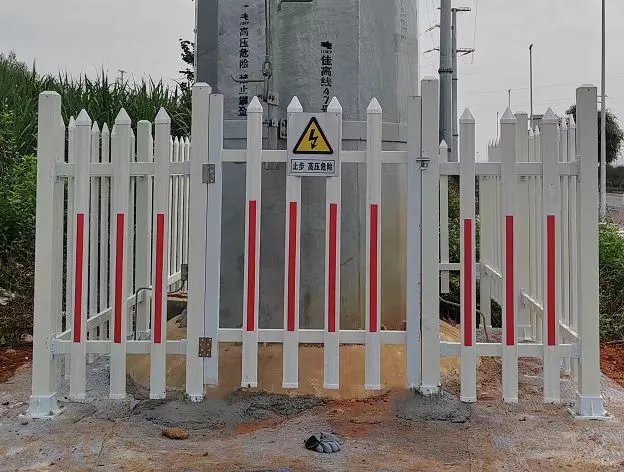loading...
- No. 9, Xingyuan South Street, Dongwaihuan Road, Zaoqiang County, Hengshui, Hebei, China
- admin@zjcomposites.com
- +86 15097380338
- Welcome to visit our website!
Exploring the Benefits and Features of FRP in Modern Applications
Exploring FRP Post Innovations and Applications
Fiber Reinforced Polymer (FRP) has emerged as a transformative material in various fields, particularly in construction and engineering. FRP posts, derived from this versatile composite, have garnered significant attention due to their unique properties and applications. This article delves into the characteristics, advantages, and practical uses of FRP posts in modern engineering.
What is FRP?
FRP is a composite material made from a polymer matrix reinforced with fibers, typically glass, carbon, or aramid. The combination of these materials results in a lightweight, high-strength product that offers excellent resistance to corrosion, fatigue, and chemical exposure. Building on these benefits, FRP posts are increasingly seen as an alternative to traditional materials like wood, steel, or concrete.
Characteristics of FRP Posts
1. Durability FRP posts are highly resistant to environmental degradation. Unlike wood, which can rot, or steel, which can corrode, FRP offers exceptional longevity when exposed to harsh weather conditions and chemicals. This makes them ideal for applications in marine environments, coastal areas, and industrial settings.
2. Lightweight One of the standout features of FRP posts is their low weight. This characteristic leads to easier handling and installation, reducing labor costs and time. Engineers and builders appreciate the convenience of working with lighter materials without compromising strength.
3. High Strength-to-Weight Ratio FRP posts possess a remarkable strength-to-weight ratio, making them suitable for supporting substantial loads without the bulkiness of traditional materials. This feature is particularly valuable in structural applications where weight reduction is crucial.
4. Design Flexibility FRP can be molded into various shapes and sizes, allowing for customized designs that align with specific project requirements. The versatility in design can enhance aesthetic appeal while maintaining structural integrity.
Advantages of FRP Posts
1. Corrosion Resistance The non-corrosive nature of FRP makes it a preferred choice for applications in environments that experience moisture, salts, or chemicals. This ensures a lower need for maintenance and replacement, leading to cost savings over time.
frp post

2. Electromagnetic Transparency Unlike metal posts, FRP does not interfere with electromagnetic signals. This quality makes FRP posts an ideal option for telecommunications and utility applications where signal clarity is critical.
3. Eco-Friendly As the construction industry increasingly focuses on sustainability, the production and use of FRP materials have gained traction. Many FRP products can be produced from recycled materials, and the lightweight nature of FRP posts contributes to lower carbon emissions during transportation and installation.
Applications of FRP Posts
FRP posts are finding applications in a variety of fields
1. Structural Support In buildings and bridges, FRP posts serve as reliable structural elements that enhance stability while reducing overall weight. Engineers utilize them in conjunction with concrete and steel frameworks to improve performance and longevity.
2. Fencing and Barriers Due to their strength and durability, FRP posts are increasingly being used in agricultural settings for fencing. They withstand harsh weather and animal interference, making them a practical choice for farmers.
3. Marine Applications In piers and docks, FRP posts resist the effects of saltwater and other corrosive materials. Their durability ensures that these structures can withstand the test of time in challenging marine environments.
4. Telecommunications FRP posts support various telecommunications equipment, including antennas and satellite dishes. Their lightweight and non-corrosive properties facilitate efficient installations in diverse settings.
Conclusion
FRP posts represent a significant advancement in material technology, offering a blend of strength, durability, and design flexibility. As industries continue to seek innovative solutions for structural integrity and sustainability, the adoption of FRP posts is likely to increase. Their wide-ranging applications across construction, agriculture, marine environments, and telecommunications highlight their versatility and potential to meet the demands of modern infrastructure. Embracing FRP technology allows engineers and builders to push the boundaries of what is possible while promoting environmentally friendly practices.
-
The Rise of FRP Profiles: Strong, Lightweight, and Built to LastNewsJul.14,2025
-
SMC Panel Tanks: A Modern Water Storage Solution for All EnvironmentsNewsJul.14,2025
-
GRP Grating: A Modern Solution for Safe and Durable Access SystemsNewsJul.14,2025
-
Galvanized Steel Water Tanks: Durable, Reliable, and Ready for UseNewsJul.14,2025
-
FRP Mini Mesh Grating: The Safer, Smarter Flooring SolutionNewsJul.14,2025
-
Exploring FRP Vessels: Durable Solutions for Modern Fluid HandlingNewsJul.14,2025
-
GRP Structures: The Future of Lightweight, High-Performance EngineeringNewsJun.20,2025
